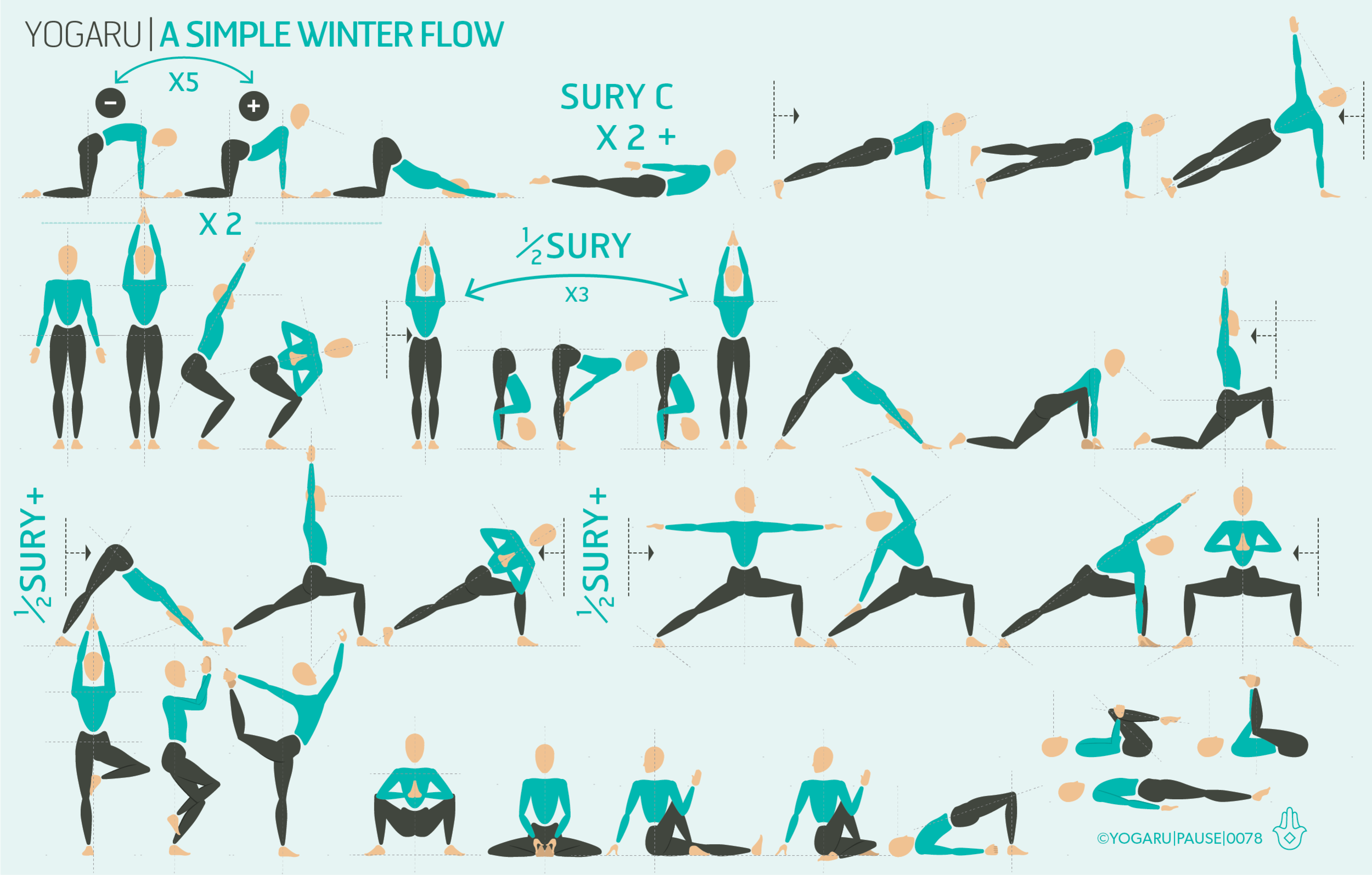COLD SNAPS IN THE AIR
At this time of year it can be hard to regulate your body temperature. One day it is a gorgeous wintery mild day and you are turning down all the heaters, and the next day you wake up and spend the day adding layer after layer of winter jumpers trying to get warm to no avail! Your practice can support you with your ever changing requirements. This sequence will be one to print out and keep to hand when the temperature suddenly drops over the winter months. It’ll have you glowing from the inside out with lots of juicy twist and strong legs standing poses.
WARMING FROM THE INSIDE OUT
Twists are one of the best family of poses to add to your winter practice. There are many benefits of twisted poses – they aid good digestion and nutrition absorption; ease constipation; increase metabolism; support the nervous system; release physical and mental tension; help your body to eliminate toxins; and boost the immune system. On top of all these amazing benefits is an added bonus of heat! You eat food and breath air to create energy for all these metabolic functions – these functions release a lovely natural heat in the body. Twists also increase circulation and distribute this heat throughout the whole body. Keeping you warm, cosy and glowing from the inside out!
EXPLORING YOUR INTERNAL GENERATOR IN YOUR PRACTICE
To take a twist you need a strong foundation. Before you move into a twist find this foundation by grounding down into your feet for standing poses, or your sit bones for seated poses, and lengthen up through the whole spine to the tip of your crown. Lengthen through both side, front and back of the body, take a deep inhale and let your belly soften and expand. Twist slowly and gradually on your exhale as your belly contracts. Explore going to 90% of your max range of motion. Moving into your deepest end range of motion twist can both tighten your breath, pull on your outer hip muscles and you pelvis to spine connection.
ALIGNMENT CUES
The peak pose in this sequence is Parivrtta Parsvakonasana/Revolved Side Angle which is a very challenging twist for the spine and hips. Follow these alignment cues to approach it from a different direction and rethink your expectations of where your final pose should be. Remember to continue to reach through the tip for the crown as you twist:
Place a brick to the outside of your right foot. From Anjaneyasana/Low Lunge, bring your hands together into prayer position, hinge forward and twist to your right. Place your left elbow to the outside of your right knee. Reach the crown of your head forward and lengthen through the spine here.
For the next step place your left hand on the brick with the elbow either to the left or the right of the right knee. Place your right hand on the back of your pelvis to check your hips are level. Keep your hand here to stabilise the pelvis or reach the right hand up.
Finally, tuck your right thumb into your right hip crease. Take an inhale here and on an exhale lift your left knee up. Place your right hand on the back of your pelvis to check your hips are level and peel the right shoulder open, or reach the right hand up. Work towards stacking the shoulders and opening the chest to the side of your mat.
Right hip draws back, left hip draws forward. Bottom waist rolls forward, top waist rolls back. Gaze to the side of the room or to the extended arm.
To save the images for personal use click and hold down the image until the ‘save image’ option appears; on Mac hold down ‘control’ and click the image to get the option box; on PC right click on the image to get the option box. Scroll down in the ‘option box’ and click ‘save image’.
Ruth Delahunty Yogaru




